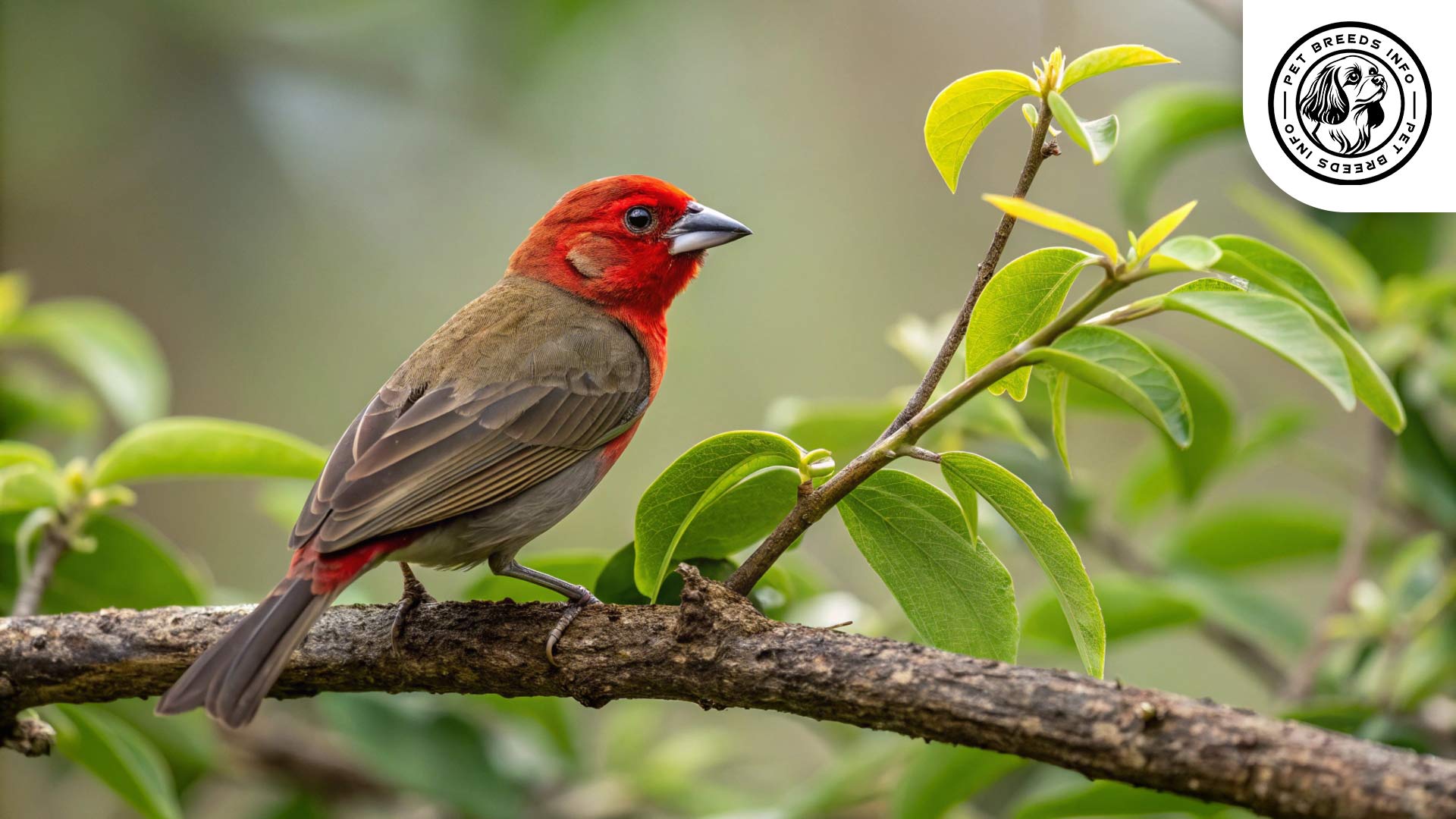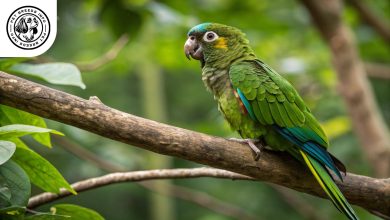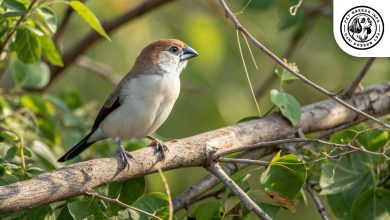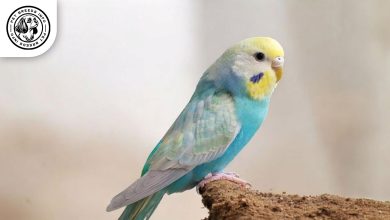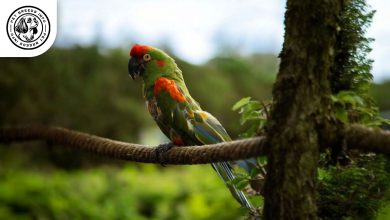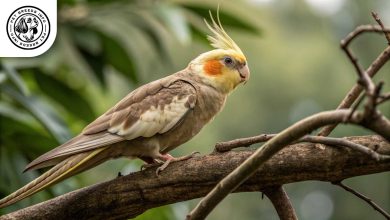Red-headed Finch Bird: Personality, Lifespan, Food & Care
General Introduction of the Breed
The Red-headed Finch (Amadina erythrocephala) is a small and attractive bird species known for its bright red head and intricate patterned body. It is also commonly referred to as the “Paradise Finch” due to its striking appearance.
This species originates from southern Africa, particularly in countries like Namibia, Botswana, and South Africa. The Red-headed Finch is often found in open woodlands, dry savannas, and farmlands where it forms large social flocks.
Historically, this bird has been admired for its beauty and is commonly kept as a pet among aviary enthusiasts worldwide.
Table of Contents
| Common Name | Red-headed Finch, Paradise Finch |
| Scientific Name | Amadina erythrocephala |
| Origin | Southern Africa (Namibia, Botswana, South Africa) |
| Size | Average length of 12-13 cm, weight approximately 15-20 grams |
| Lifespan | 5-8 years (can be longer with proper care) |
| Talking Ability | Not trainable to talk like parrots |
| Colors | Males: Striking red head, brownish-gray body, white-barred belly; Females: Subdued appearance |
| Noise Level | Not explicitly mentioned, but likely typical finch chirping and calls |
| Social Behavior | Social, lives in large flocks, forms strong bonds within the flock, gets along well with other birds |
Physical Characteristics
The Red-headed Finch is a small-sized bird with an average length of about 12-13 cm and a weight of approximately 15-20 grams.
It has beautiful plumage with a striking red head (males only), brownish-gray body, and a finely patterned belly with white barring. Females lack the vivid red coloration and have a more subdued appearance.
The eyes are dark brown, round, and alert, contributing to its keen vision.
The beak is conical and slightly curved, suitable for cracking seeds.
Its wings are relatively short but strong, allowing fast and agile flight.
The tail is medium in length and slightly rounded.
Read More: Wyandotte Chicken
Personality and Temperament
The Red-headed Finch is a social and active bird, often seen in large colonies in the wild.
It is intelligent, quick to adapt, and easy to train with positive reinforcement.
This finch is moderately energetic and requires ample space to move and fly.
It forms strong bonds with its flock rather than individual humans but can still recognize and interact with its owner.
The species is friendly and non-aggressive, getting along well with other birds in an aviary setting.
Unlike predatory birds, it has no significant hunting instincts but enjoys playful activity.
It is sensitive to environmental changes, requiring a consistent and stable habitat.
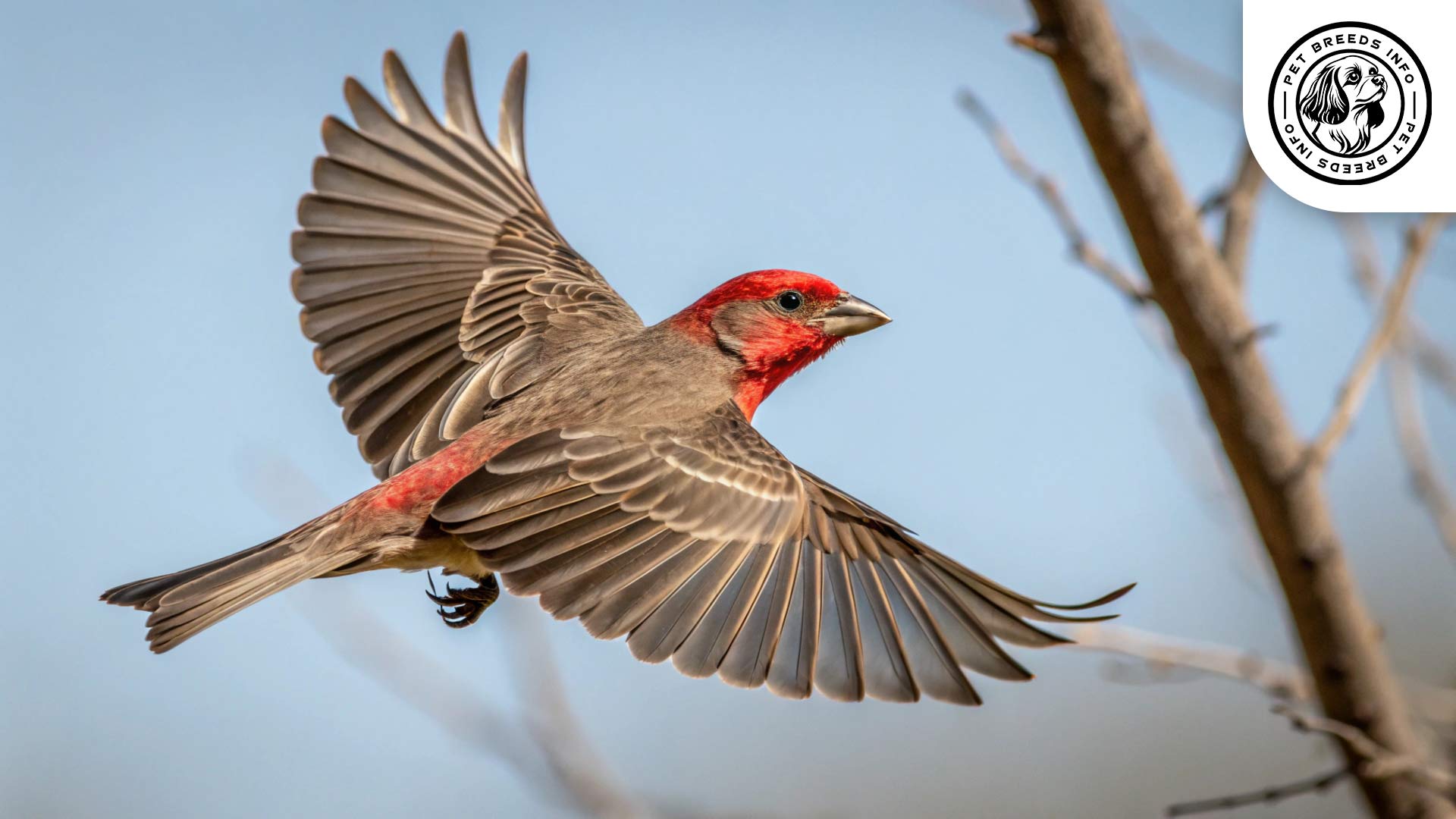
Care and Maintenance Requirements
Red-headed Finches are active birds that need space to fly. A large cage or aviary with horizontal bars is ideal.
They are well-suited for outdoor aviaries but can adapt to indoor living if provided with flight space.
Their feathers require minimal grooming, and occasional misting can help maintain healthy plumage.
They are cold-sensitive and should be kept in temperatures above 10°C (50°F).
Regular cage cleaning is essential. Fresh water should always be available for drinking and bathing.
Diet and Nutrition
The ideal diet consists of high-quality finch seed mix supplemented with fresh greens, fruits, and occasional protein sources like insects.
Calcium supplements such as cuttlebone or mineral blocks are crucial for maintaining bone health.
Avoid feeding avocado, chocolate, caffeine, and processed human foods as they are toxic to birds.
They should have access to food throughout the day, with fresh portions provided daily.

Health and Common Medical Issues
Common health concerns include respiratory infections, mites, parasites, and nutritional deficiencies.
They are prone to stress-related illnesses if kept in isolation or improper conditions.
The average lifespan ranges between 5-8 years, though proper care can extend their life.
Regular vet check-ups, vaccinations, and parasite control are advised for maintaining their health.
Read More: Yellow Canary Bird
Training and Behavior Management
While not trainable like parrots, they can learn to recognize their owner and respond to feeding calls.
They thrive in a secure environment where they feel safe to engage in natural behaviors.
Introductions to hands should be gradual, using calm movements to build trust.
Socialization with other birds is essential, as they are highly social creatures.
Positive reinforcement, such as treats and gentle interaction, helps in establishing familiarity.
Interaction with Other Animals and Humans
Red-headed Finches are peaceful birds that can coexist well with other finches and small non-aggressive birds.
They are not highly dependent on human interaction but appreciate gentle and predictable routines.
Best suited for bird enthusiasts who appreciate watching rather than hands-on pet interaction.
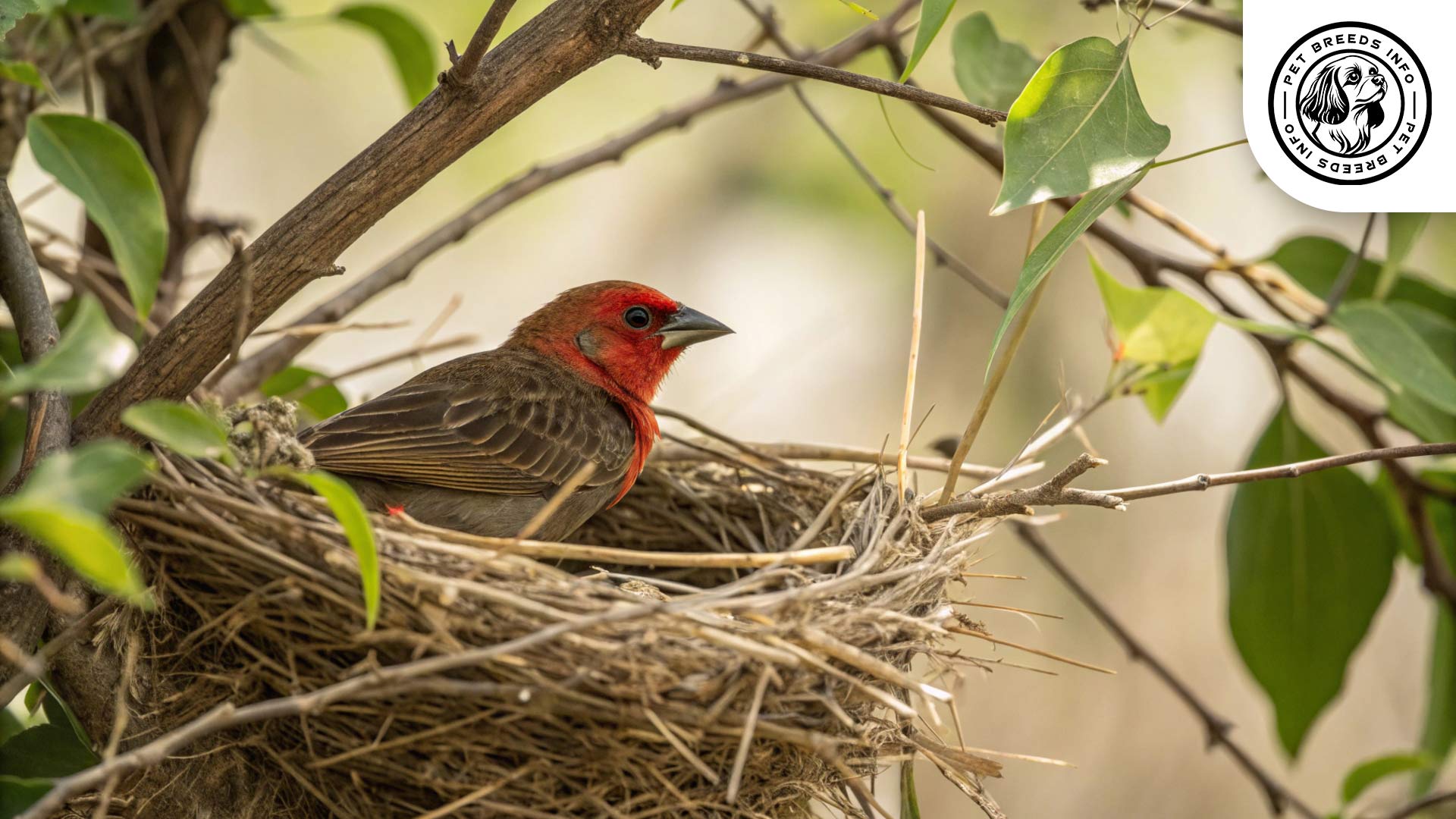
Price and Availability
The price of a Red-headed Finch varies depending on age, breeder reputation, and location, usually ranging between $20-$50 per bird.
They can be purchased from reputable breeders, aviary shops, or adoption from bird rescue centers.
When adopting or buying, ensure the bird is active, alert, and free from signs of illness.
Conclusion and Final Thoughts
The Red-headed Finch is a wonderful species for bird lovers who enjoy observing social bird behavior.
It thrives best in aviary settings with other finches and has low-maintenance care requirements.
Prospective owners should consider its need for companionship, dietary variety, and appropriate housing.
With proper care, the Red-headed Finch can be a delightful and visually appealing addition to any bird lover’s household.
Read More: Mourning Dove
FAQ
What is a Red-headed Finch known for?
It’s known for its bright red head (in males) and intricate patterned body.
Where do Red-headed Finches come from?
They originate from southern Africa, in countries like Namibia, Botswana, and South Africa.
Are Red-headed Finches good pets?
They are well-suited for bird enthusiasts who enjoy observing social bird behavior in an aviary setting.
What do Red-headed Finches eat?
Their diet consists of a high-quality finch seed mix supplemented with fresh greens, fruits, and occasional protein.
How long do Red-headed Finches typically live?
Their average lifespan is between 5-8 years with proper care.
